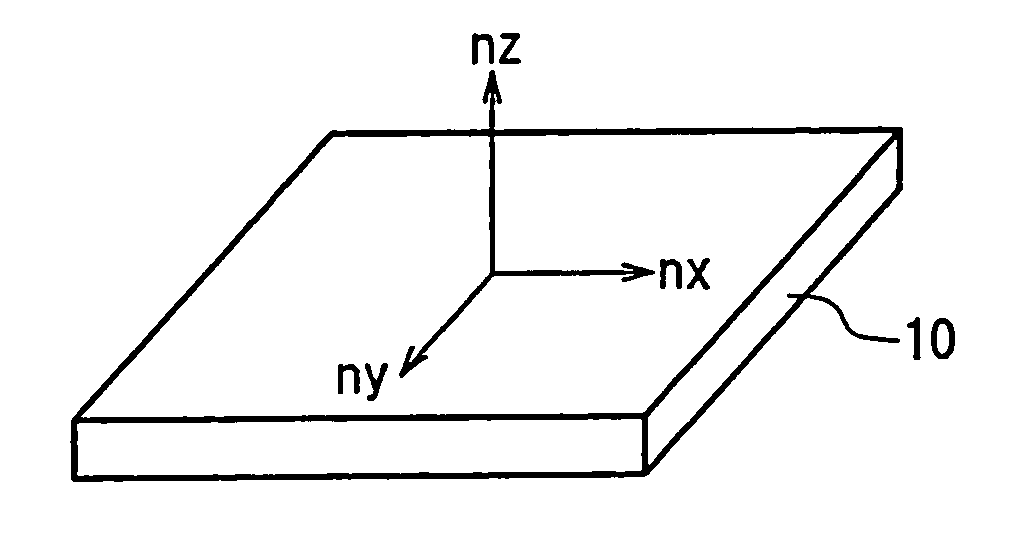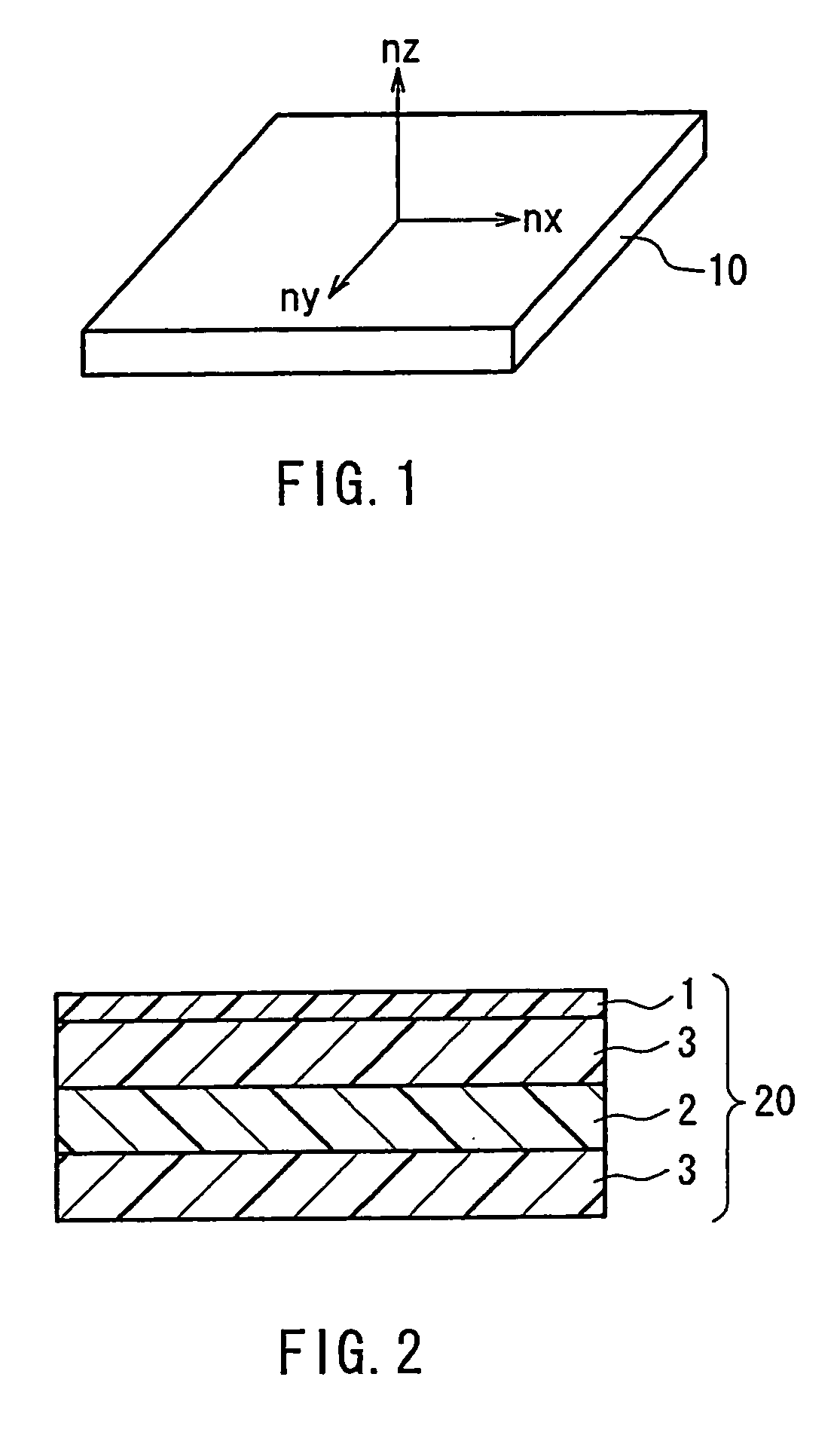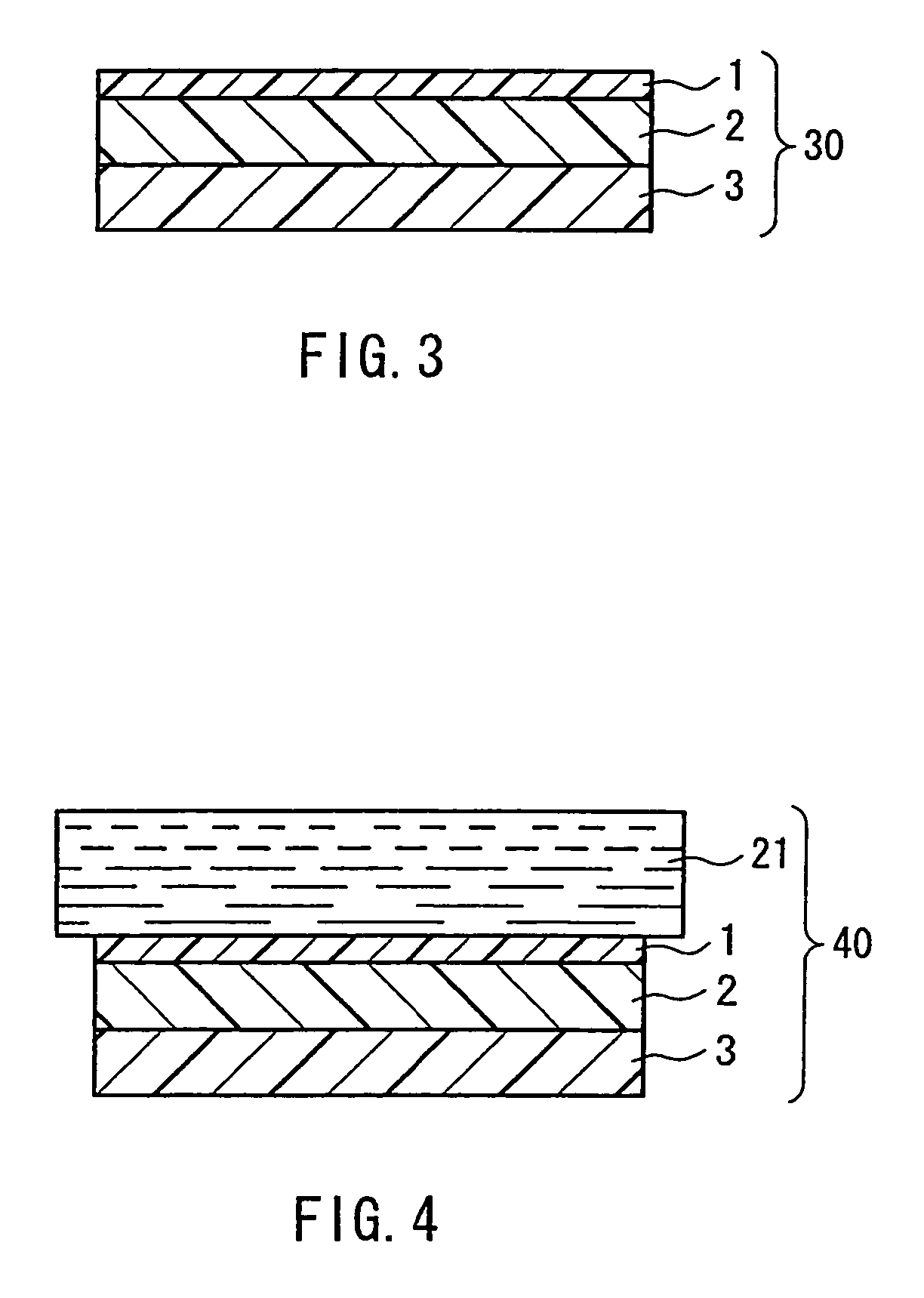Optical film, method for producing the same, and image display device using the same
a technology of optical film and birefringent layer, which is applied in the direction of instruments, polarising elements, transportation and packaging, etc., can solve the problems of optical distortion, insufficient adhesiveness and some lamination type retardation films, so as to improve the adhesive between the base and the birefringent layer formed on the base, improve the adhesiveness, and improve the adhesiveness
- Summary
- Abstract
- Description
- Claims
- Application Information
AI Technical Summary
Benefits of technology
Problems solved by technology
Method used
Image
Examples
example 1
[0178]Polyimide having molecular weight (Mw) of 110,000, which is represented by the below-mentioned formula, was synthesized from 2,2-bis(3,4-dicarboxyphenyl)hexafluoropropane dianhydride and 2,2′-bis(trifluoromethyl)-4,4′-diaminobiphenyl, and dissolved in ethyl acetate so as to prepare a 20 wt % polyimide solution. Regarding the preparation of polyimide or the like, description of “Polymer” 40 (1999) 4571–4583, F. Li et al. was referenced to. A triacetylcellulose (TAC) film with a thickness of 80 μm was stretched 1.3 times its original length in the transverse direction by fixed-end transverse stretching at 175° C., thereby a stretched TAC film with a thickness of 78 μm was obtained. The thus stretched TAC film was coated with the polyimide solution, and heat-treated for 10 minutes at 150° C. so as to obtain an optical film. The optical film includes a completely transparent and flat stretched TAC film (a base (b)) with a thickness of 78 μm and Δn(b) of approximately 0.0006, and a...
example 2
[0180]Polyetherketone (trade name: Polyetherketone A manufactured by Nippon Shokubai Co., Ltd.) having molecular weight (Mw) of 110,000 represented by the below-mentioned figure (18) was dissolved in methyl isobutyl ketone so as to prepare a 20 wt % varnish. This varnish was coated on a stretched TAC film as in Example 1, and dried for 20 minutes at 150° C. so as to obtain an optical film. The optical film included a completely transparent and flat stretched TAC film (a transparent film (b)) with a thickness of 78 μm and a Δn(b) of approximately 0.0006, and a polyether ketone film (a birefringent layer (a)) with a thickness of 4 μm and a Δn(a) of approximately 0.038, laminated on the transparent film (b). This optical film included a birefringent layer having an optical property of nx>ny>nz.
[0181]
example 3
[0182]Polyimide (Mw=30,000) was synthesized from 4,4′-bis(3,4-dicarboxyphenyl)-2,2-diphenylpropane dianhydride and 2,2′-dichrolo-4,4′-diaminobiphenyl, and dissolved in cyclopentanone so as to prepare a 20 wt % polyimide solution. This solution was coated on an unstretched TAC film with a thickness of 80 μm, dried for 5 minutes at 130° C., and stretched 1.1 times its original length by longitudinal uniaxial stretching at 150° C. so as to obtain an optical film. The optical film included a completely transparent and flat TAC film (a transparent film (b)) with a thickness of 78 μm and a Δn(b) of approximately 0.0006, and a polyimide film (a birefringent layer (a)) with a thickness of 5 μm and a Δn(a) of approximately 0.025, being laminated on the transparent film (b). This optical film included a birefringent layer having an optical property of nx>ny>nz.
PUM
| Property | Measurement | Unit |
|---|---|---|
| thickness | aaaaa | aaaaa |
| thickness | aaaaa | aaaaa |
| thickness | aaaaa | aaaaa |
Abstract
Description
Claims
Application Information
 Login to View More
Login to View More - R&D
- Intellectual Property
- Life Sciences
- Materials
- Tech Scout
- Unparalleled Data Quality
- Higher Quality Content
- 60% Fewer Hallucinations
Browse by: Latest US Patents, China's latest patents, Technical Efficacy Thesaurus, Application Domain, Technology Topic, Popular Technical Reports.
© 2025 PatSnap. All rights reserved.Legal|Privacy policy|Modern Slavery Act Transparency Statement|Sitemap|About US| Contact US: help@patsnap.com



